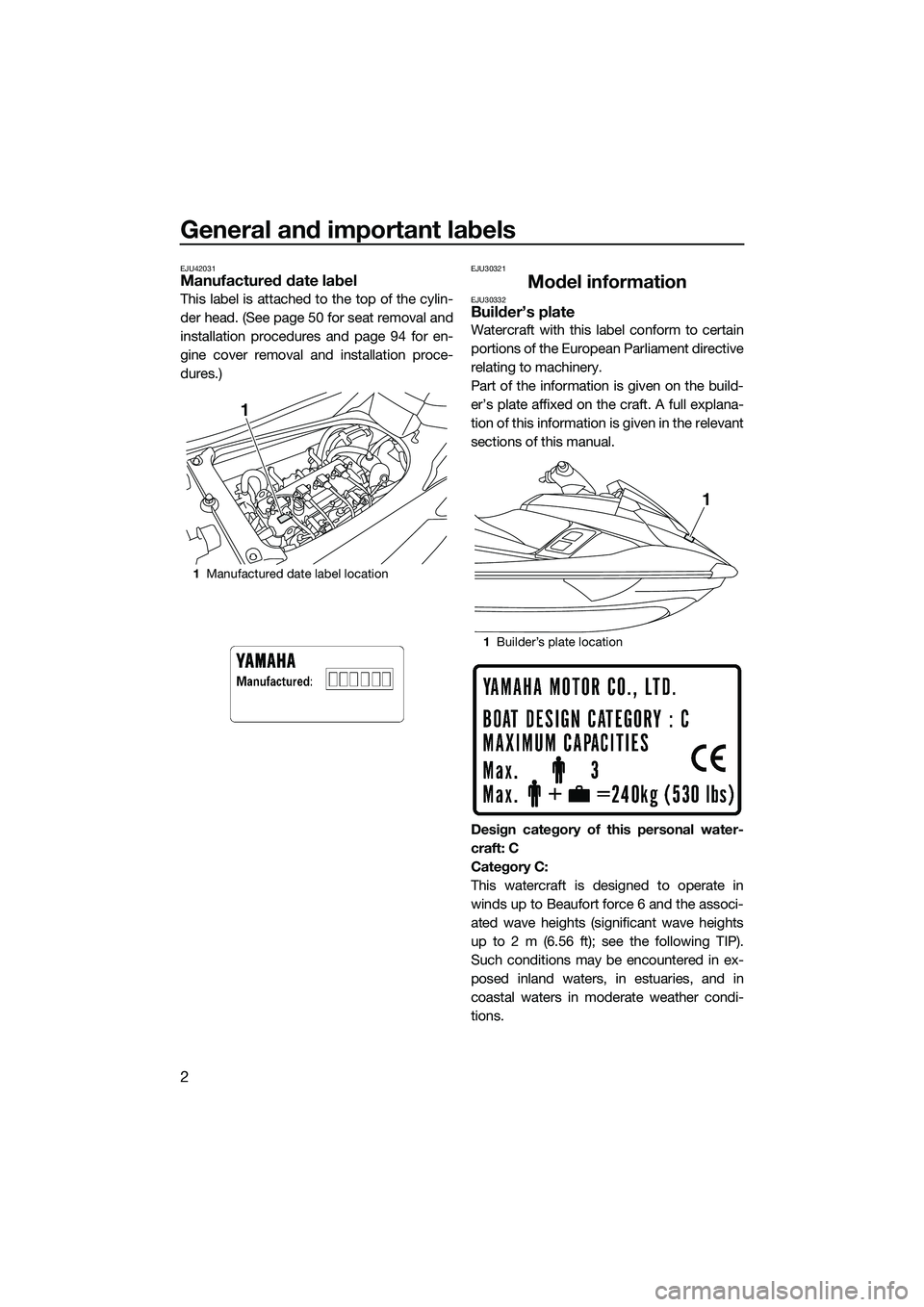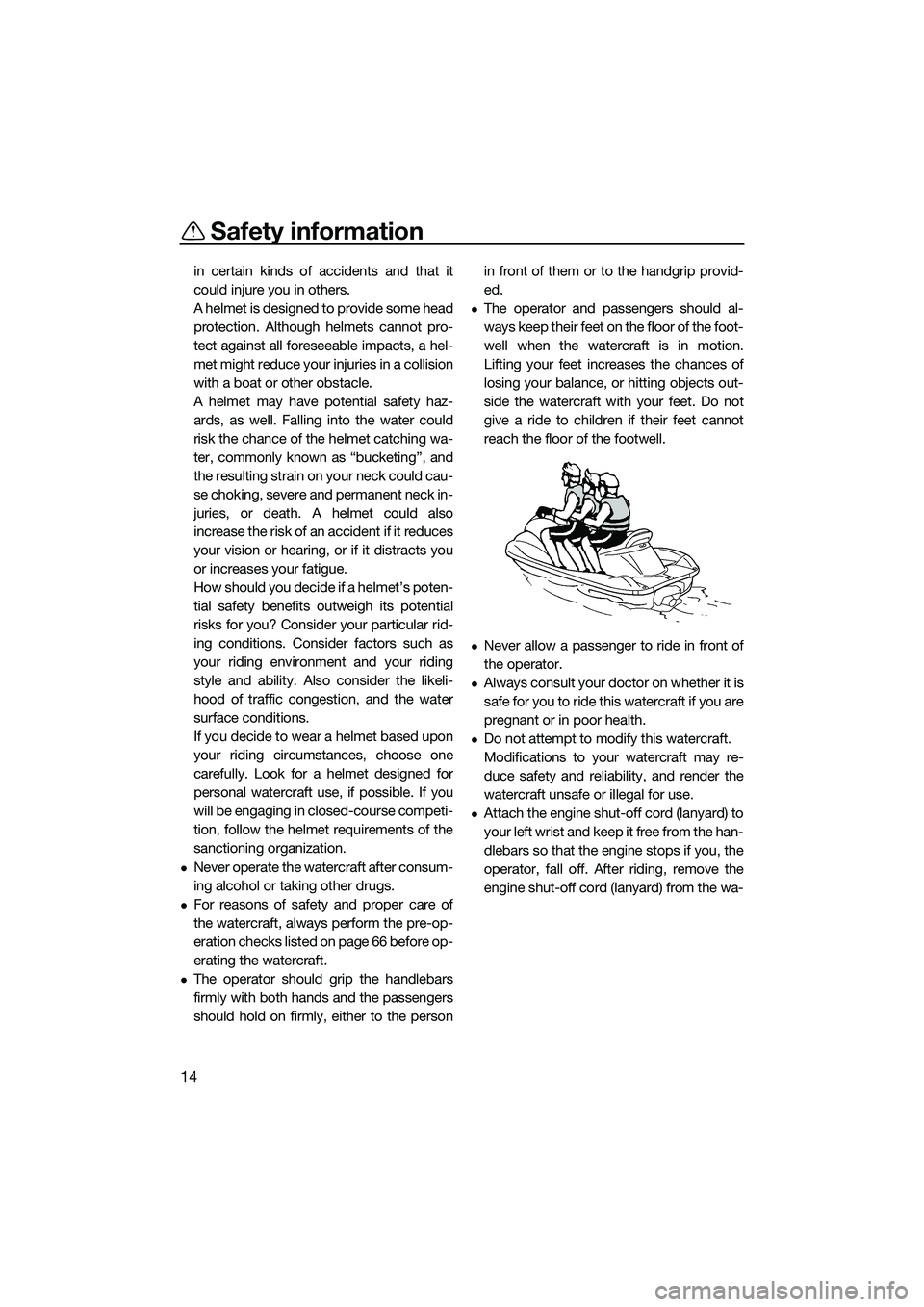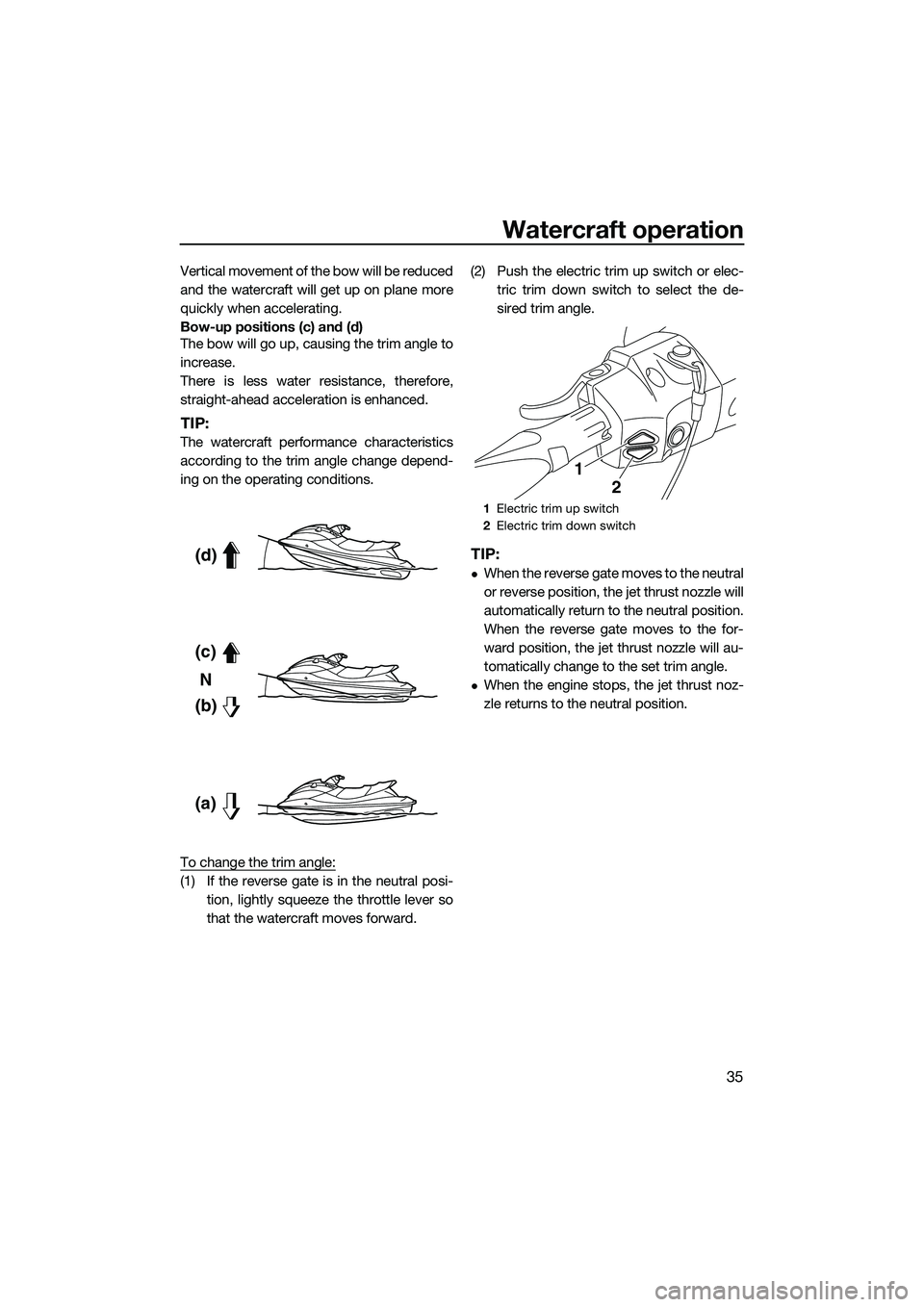Head YAMAHA FX SVHO 2015 Owners Manual
[x] Cancel search | Manufacturer: YAMAHA, Model Year: 2015, Model line: FX SVHO, Model: YAMAHA FX SVHO 2015Pages: 118, PDF Size: 5.39 MB
Page 8 of 118

General and important labels
2
EJU42031Manufactured date label
This label is attached to the top of the cylin-
der head. (See page 50 for seat removal and
installation procedures and page 94 for en-
gine cover removal and installation proce-
dures.)
EJU30321
Model informationEJU30332Builder’s plate
Watercraft with this label conform to certain
portions of the European Parliament directive
relating to machinery.
Part of the information is given on the build-
er’s plate affixed on the craft. A full explana-
tion of this information is given in the relevant
sections of this manual.
Design category of this personal water-
craft: C
Category C:
This watercraft is designed to operate in
winds up to Beaufort force 6 and the associ-
ated wave heights (significant wave heights
up to 2 m (6.56 ft); see the following TIP).
Such conditions may be encountered in ex-
posed inland waters, in estuaries, and in
coastal waters in mo derate weather condi-
tions.
1 Manufactured date label location
1
1Builder’s plate location
1
UF3J71E0.book Page 2 Friday, June 27, 2014 1:50 PM
Page 20 of 118

Safety information
14
in certain kinds of accidents and that it
could injure you in others.
A helmet is designed to provide some head
protection. Although helmets cannot pro-
tect against all foreseeable impacts, a hel-
met might reduce your injuries in a collision
with a boat or other obstacle.
A helmet may have potential safety haz-
ards, as well. Falling into the water could
risk the chance of the helmet catching wa-
ter, commonly known as “bucketing”, and
the resulting strain on your neck could cau-
se choking, severe and permanent neck in-
juries, or death. A helmet could also
increase the risk of an accident if it reduces
your vision or hearing, or if it distracts you
or increases your fatigue.
How should you decide if a helmet’s poten-
tial safety benefits outweigh its potential
risks for you? Consider your particular rid-
ing conditions. Consider factors such as
your riding environment and your riding
style and ability. Also consider the likeli-
hood of traffic congestion, and the water
surface conditions.
If you decide to wear a helmet based upon
your riding circumstances, choose one
carefully. Look for a helmet designed for
personal watercraft use, if possible. If you
will be engaging in closed-course competi-
tion, follow the helmet requirements of the
sanctioning organization.
Never operate the watercraft after consum-
ing alcohol or taking other drugs.
For reasons of safety and proper care of
the watercraft, always perform the pre-op-
eration checks listed on page 66 before op-
erating the watercraft.
The operator should grip the handlebars
firmly with both hands and the passengers
should hold on firmly, either to the person in front of them or to the handgrip provid-
ed.
The operator and passengers should al-
ways keep their feet on the floor of the foot-
well when the watercraft is in motion.
Lifting your feet increases the chances of
losing your balance,
or hitting objects out-
side the watercraft with your feet. Do not
give a ride to children if their feet cannot
reach the floor of the footwell.
Never allow a passenger to ride in front of
the operator.
Always consult your doctor on whether it is
safe for you to ride this watercraft if you are
pregnant or in poor health.
Do not attempt to modify this watercraft.
Modifications to your watercraft may re-
duce safety and reliability, and render the
watercraft unsafe or illegal for use.
Attach the engine shut-off cord (lanyard) to
y o u r l ef t w r is t an d k ee p i t fr e e f r o m t h e h an -
dlebars so that the engine stops if you, the
operator, fall off. After riding, remove the
engine shut-off cord (lanyard) from the wa-
UF3J71E0.book Page 14 Friday, June 27, 2014 1:50 PM
Page 41 of 118

Watercraft operation
35
Vertical movement of the bow will be reduced
and the watercraft will get up on plane more
quickly when accelerating.
Bow-up positions (c) and (d)
The bow will go up, causing the trim angle to
increase.
There is less water resistance, therefore,
straight-ahead acceleration is enhanced.
TIP:
The watercraft performance characteristics
according to the trim angle change depend-
ing on the operating conditions.
To change the trim angle:
(1) If the reverse gate is in the neutral posi-tion, lightly squeeze the throttle lever so
that the watercraft moves forward. (2) Push the electric trim up switch or elec-
tric trim down switch to select the de-
sired trim angle.
TIP:
When the reverse gate moves to the neutral
or reverse position, the jet thrust nozzle will
automatically return to the neutral position.
When the reverse gate moves to the for-
ward position, the jet thrust nozzle will au-
tomatically change to the set trim angle.
When the engine stops, the jet thrust noz-
zle returns to the neutral position.
(d)
(c)
(b)N
(a)
1
Electric trim up switch
2 Electric trim down switch
1
2
UF3J71E0.book Page 35 Friday, June 27, 2014 1:50 PM